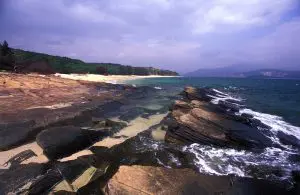On a map of the SAR, the island of Po Toi looks barely a stone’s throw from the southeast tip of Hong Kong Island. It’s small, too, as if it might fit comfortably on the Kowloon peninsula. “Pah! That’s not a most promising place for an outing,” you might think.
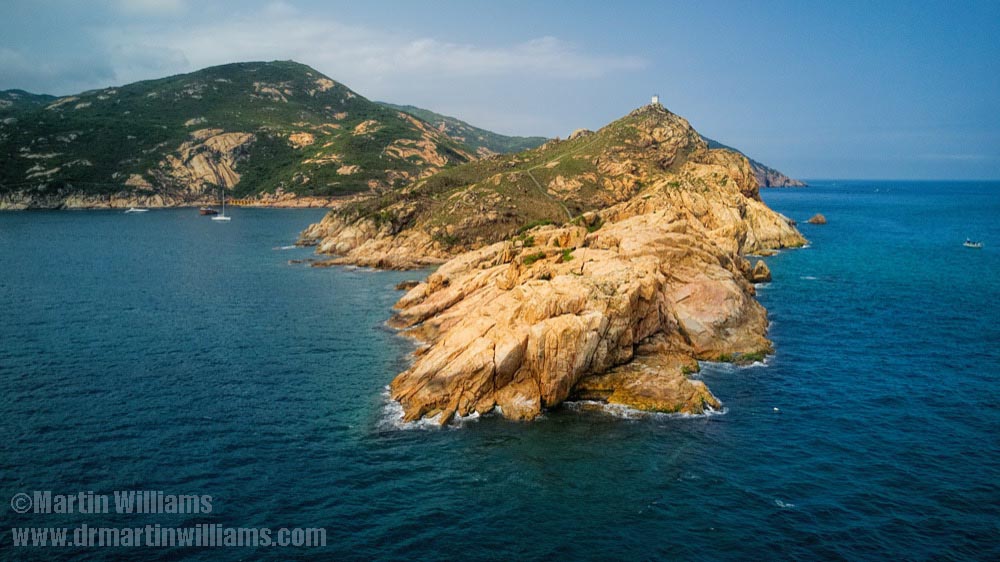
Yet it’s a great place. To visit Po Toi is to leave the city and arrive on a small world with village, hills, coastal inlets and rocky headlands, with trails to hike, places to explore, and some of Hong Kong’s best coastal scenery. Plus, there are simple cafes and a restaurant, with fare ranging from noodle soup to seafood banquets favoured by junk parties.
Heading for the hills
Junk parties and ferry passengers arrive via a pier in Tai Wan – Large Bay, a cove in southwest Po Toi. With shelter against typhoon onslaughts and a stream flowing to a tidal pool behind a beach, this became home to most of the island’s residents. Around a thousand fishermen and farmers lived here in the middle of last century, though numbers have dwindled and maybe only a few tens of people remain.
There are ruined houses beneath grand old trees at the end of the pier. A footpath heads left, towards the tiny beach and main village area. There’s also a junction at an old shanty store; turn right here if you’d like to roam the wilder parts of Po Toi. Soon, steps lead uphill, and you can pass a long disused school building.
A path climbs the hillside, with shrubs and trees affording welcome shade against hot sun. The trail eases, and there’s one of the sturdy signposts that point the way along walking routes. Partly blackened with time, these signposts now seem like relics from an earlier era, and this one still indicates the way to “Mo’s Old House”, even though a newer sign warns the area is private and “you will be penalized for trespassing”. It’s reportedly a grand old house that was a base for Japanese soldiers during World War Two, and is now abandoned, hidden amongst dense young woodland.
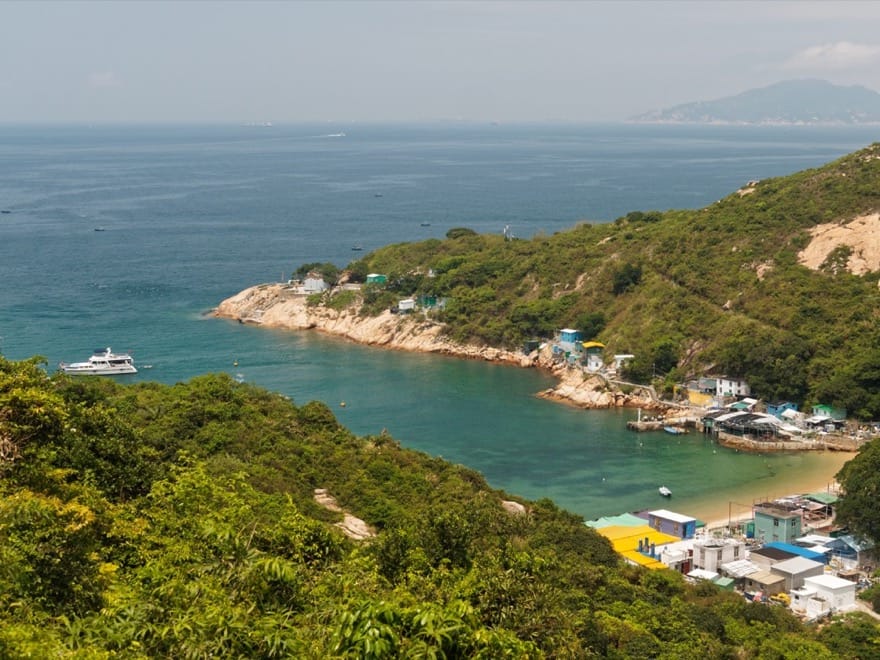
Trails over Po Toi’s highlands
Higher up the hillside, the trail emerges from the vegetation and crosses a patch of gently sloping, weatherworn granite. There’s another sign, and the Rugged Trail heads off to the left, while the main path heads up a broad ridge to the right.
The Rugged Trail is indeed rough underfoot. Stretches are slender dirt trails, and in parts it crosses granite outcrops – sometimes with old chain link fences you might hold while scrambling up and down. It leads over an area of rolling hills, with views to the steep slopes of neighbouring Beaufort Island, and southern Hong Kong Island, then drops down to a Tin Hau temple at the mouth of Tai Wan.
To the right, the trail is easier, with concrete steps. It soon reaches Ngau Wu Teng, which is the highest point on Po Toi, 188 metres above sea level. A pavilion here makes a fine place to rest, shelter from the sun – or maybe rain, and enjoy looking out over southern Po Toi and the sea beyond.
Between the rocks and the wild place
Then, flights of steps lead down to a neck of land that connects to a peninsula. Just below, on the right, a tiny beach is pleasant for paddling rather than swimming. Head straight on, and the path climbs a low hill, dotted with boulders amidst vegetation kept low by fires started by grave sweepers doubling as accidental arsonists.
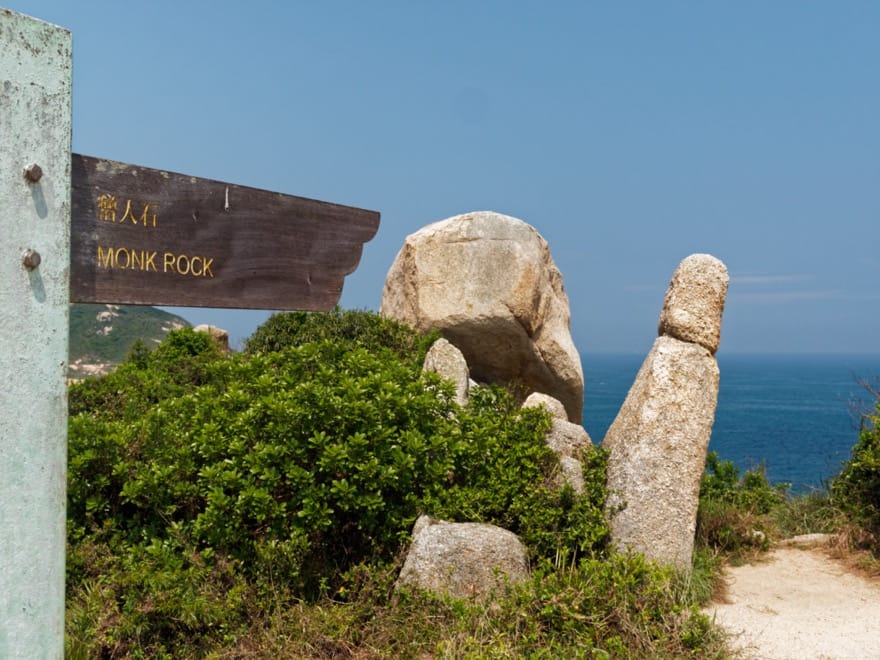
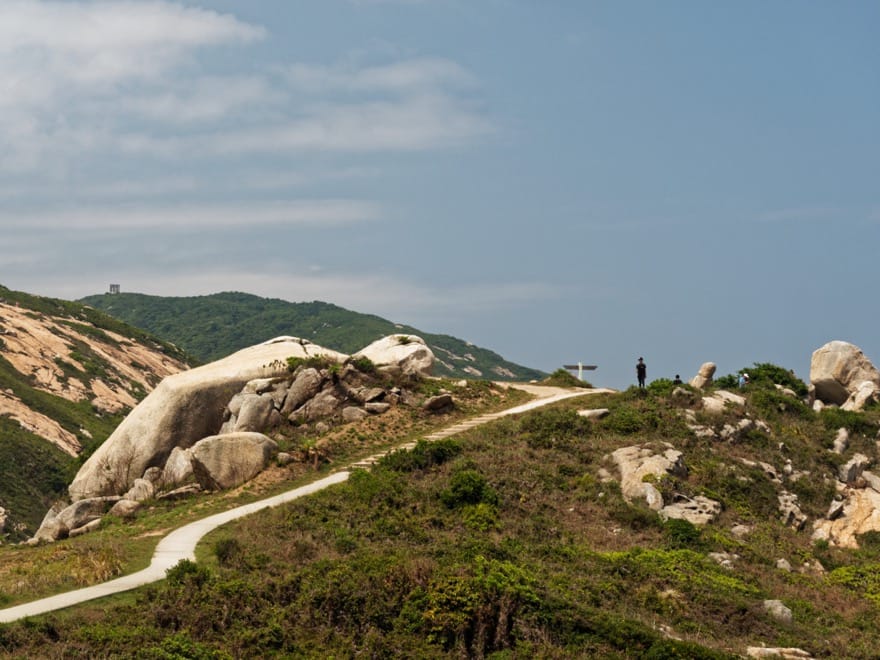
Some of the rocks here have been named. Monk Rock is like a pillar rather taller than a man, somewhat recalling a monk bowing in supplication. A sign by it also points to Turtle Rock, though this is better appreciated from further along the path.
There’s a lighthouse atop the hill. It’s not a classic round white building, run by a man in a thick warm jersey with a bushy beard and attentive cat, but a squat square concrete structure, operating automatically.
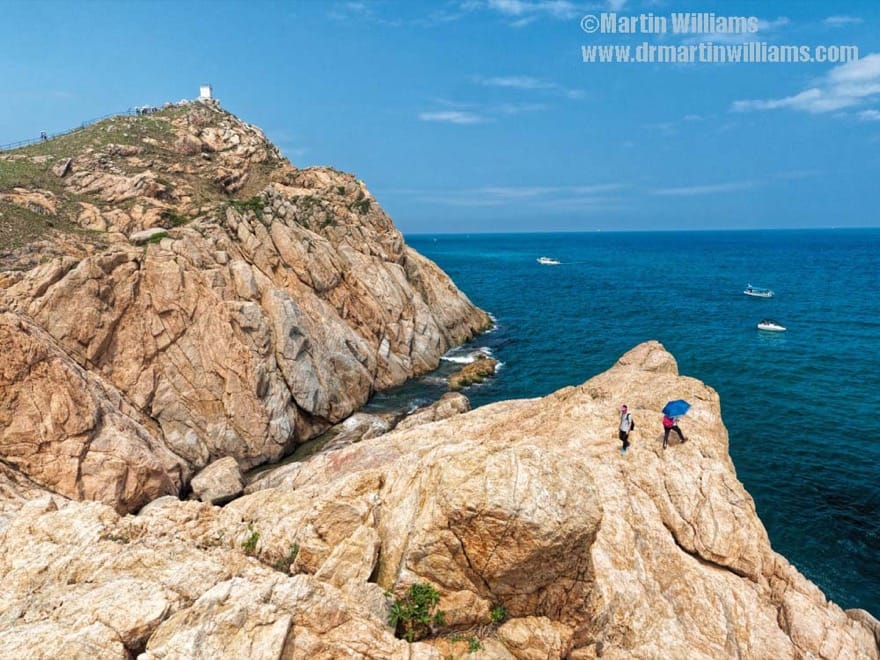
Below here, there’s a chance to scramble onto the southernmost tip of Po Toi – and, along with one of the Soko Islands, the southernmost land in Hong Kong. It’s hewn from granite, and perhaps kept bare of soil by typhoon waves. With waves surging against the low cliffs even on fine days, this is a wonderful, wild place.
Po Toi is akin to a magnet for migratory birds
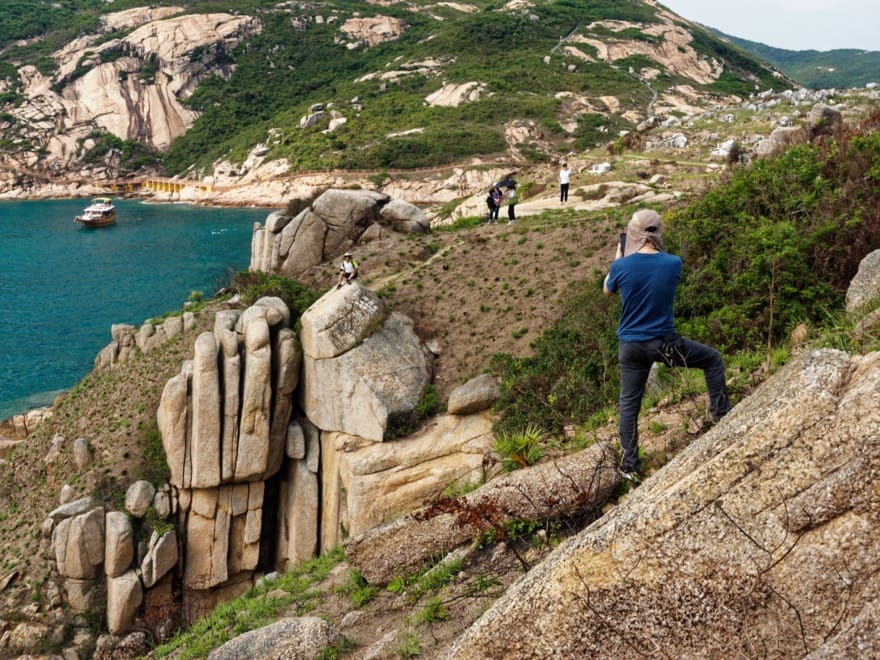
A path back towards the ferry pier mostly hugs the coastline. It passes above Palm Cliff, where Buddha Hand Rock does indeed look like the hand of a Buddha statue, held palm outwards. There’s a short footbridge over exposed rock that hikers formerly had to clamber over. Shortly beyond this, there’s a side trail down to an ancient rock carving.
The trail passes through an area of former farmland. Controversy flared here in 2012, when a company built crude “vaults” for storing urns. Villagers and environmentalists objected to the scheme, and the columbarium plans were halted. This prompted the Hong Kong Birdwatching Society to support conservation measures for Po Toi, including a proposal to designate much of it as country park, chiefly as it’s a magnet for migratory birds.
The country park idea seems stalled. But Po Toi retains its magnetic appeal to buzzards, flycatchers, warblers and more, which are especially drawn to the clusters of old trees around Tai Wan. Visit during spring or autumn migration seasons and while you may notice few birds, but could well sight a binocular-toting birdwatcher, or a gaggle of greater-camera-lugging photographers.
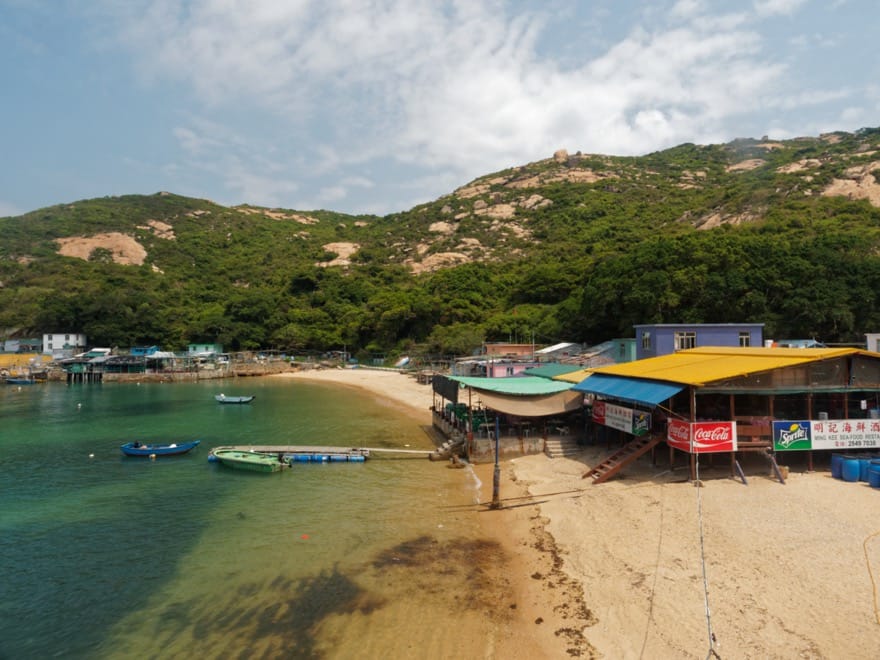
On fine days, there could be junk parties too, arriving to feast at Ming Kee Seafood Restaurant. Some hikers are content with less celebrated fare, at one of the simpler cafes, perhaps together with a chilled drink or two before the ferry arrives for the journey back to the big city.
Getting there
Tsui Wah Ferry Service (HK) operates ferries serving Po Toi, with departures from and to Aberdeen on Tuesdays, Thursdays, Saturdays, Sundays and public holidays, There’s also a service between Stanley and Po Toi on Sundays and public holidays.















